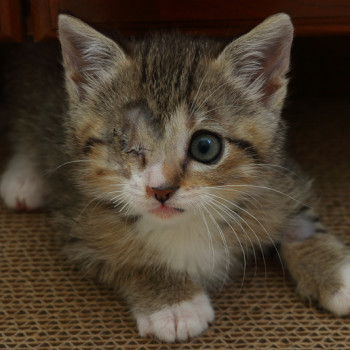Can you think of anything that would make you look forward to getting up every 2-3 hours in the middle of the night? Neither could Dr. Laurie Peek, until she experienced orphaned kitten fostering.
“It’s one of my favorite things in the whole wide world!” she said. A Maddie’s Fund® Executive Leadership Team member, Dr. Peek has now fostered her fair share of orphaned kittens. She says the most intense time is a period of about two weeks at the most, as neonatal kittens are weaned off milk by four weeks.
“Be prepared to work during that time, but it’s worth every minute,” she promises. “Two weeks out of your life — and theirs — is short in the grand scheme of things, but it’s tremendously impactful.”
So just what does this work look like?
For those short few weeks, neonatal kittens need to be fed every 2-3 hours, so it’s a bit of a commitment. “But they get so excited to see you! I didn’t even mind getting up in the middle of the night for the first two weeks because of how excited they get.”
Dr. Peek found that these time intervals are important because you don’t want to overdo it. “Many people double up to minimize the number of feedings, which is fine for an older cat, but not for bottle-fed.” She explains how bottle-fed kittens consume much more than they would if they were nursing from their mother, and it’s usually more than their stomach can handle. She was able to create a guide for feeding volume to remove ad-libbing the time of feedings.
Around six to eight weeks is when they can be spayed or neutered, and then made available for adoption. After years of fostering, she’s never had a kitten more than a week after becoming available for adoption. “They go so quick – everyone wants them! Even the kittens with one eye, who are blind, or have other medical issues,” she said.
She recalls one kitten in particular, Mr. Cutie Pie. He was a singleton she was asked to foster because he had a prolapsed eye from an infection. Yet, she said, “He purred, played, and did everything a kitten should do – he had no acknowledgment of his eye.” His eye was removed at 5 weeks. Of course he got adopted right away!
Now what about those rewards we mentioned?
The rewards undoubtedly outweigh the challenges, she said. “It’s such a pleasure to be holding this little kitten in your hand and knowing your helping to nourish this life. They’re so sweet, so pure. To be able to care for it, then see it start to play. It’s definitely worth the experience and the time dedicated to those two weeks.”
An added bonus? Her kids’ involvement! Supervised, of course. “They were in charge of playtime and socializing with the cats. It was great; they were very playful and got them where they needed to be, socially.”
She said it was a win-win because it also taught her kids empathy, compassion and responsibility. “It required them to come outside of their own life and see how they could help others, and the impact it had.”
Last but not least, she gushes about the follow-up photos from adopters. “It’s such an incredible feeling… the gift that keeps on giving.”
Sounds pretty wonderful, right? If you’re up for the rewarding experience of fostering orphaned kittens, now is the perfect time to start! Kitten season is approaching, the time of year when shelters and rescues are in desperate need of orphaned kitten fosters. Isn’t it nice to know such a short-term commitment can help save lives, and help lead us to a no-kill nation? We couldn’t agree more.
Interested in learning more about fostering orphaned kittens? Locate and contact your local shelter or rescue group today! Know someone who might be interested? Share this with them and help save lives!
Also of interest:
Orphaned Kitten Care: How-to videos
Slideshow: Happy Endings for Orphaned Kittens
Don’t miss the rest of our great content — sign up here!

